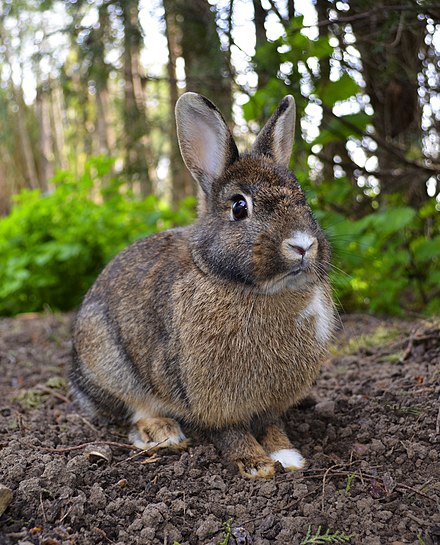Rabbits are mammals commonly found in Europe, Africa, America and Asia. Here are detailed information about rabbits and their living habits:

Scientific name: Oryctolagus cuniculus (domestic rabbit), which also includes many different species.
Body shape: Rabbits are small in size, with short forelimbs and strong hind legs, suitable for jumping and running.
Coat Color: Coat colors vary, including white, grey, brown or a mottled mix.
Eyes: With well-developed posterior eyes, sensitive hearing and smell.
Wild rabbits are found in open lands and grasslands in Europe, Africa, America and Asia.
Rabbits inhabit open environments such as meadows, wilderness, forest edges and farmland, and can also survive in desert areas.
Omnivorous: Rabbits feed mainly on plants, including grass, leaves, branches, roots, etc., and occasionally insects and other small invertebrates.
Strong fecundity: Rabbits have strong fecundity. Female rabbits (female rabbits) have a gestation period of about 30-32 days. They have multiple babies. They can produce several litters a year, and each litter can give birth to 5-10 baby rabbits.
Tunnel Engineers: Rabbits like to dig tunnels, digging and living in underground nests, which helps them avoid predators.
Social Animals: Rabbits are usually social animals, foraging in groups on grasslands and cooperating to increase awareness of predators.
When rabbits survive in the wild, they face threats from predators such as birds of prey, foxes, and hounds.
Pets: Rabbits are a common choice as pets. They are usually docile and cute, and they can easily form close relationships with humans.
Food and Experimental Uses: Rabbit meat is consumed as food in many cultures and is also commonly used in laboratories for scientific experiments.
Overall, rabbits are gentle and lovable animals whose rapid reproduction makes them hunting targets in many areas, however they are also beloved by humans as pets in many cultures.
animal tags: rabbit
We created this article in conjunction with AI technology, then made sure it was fact-checked and edited by a Animals Top editor.